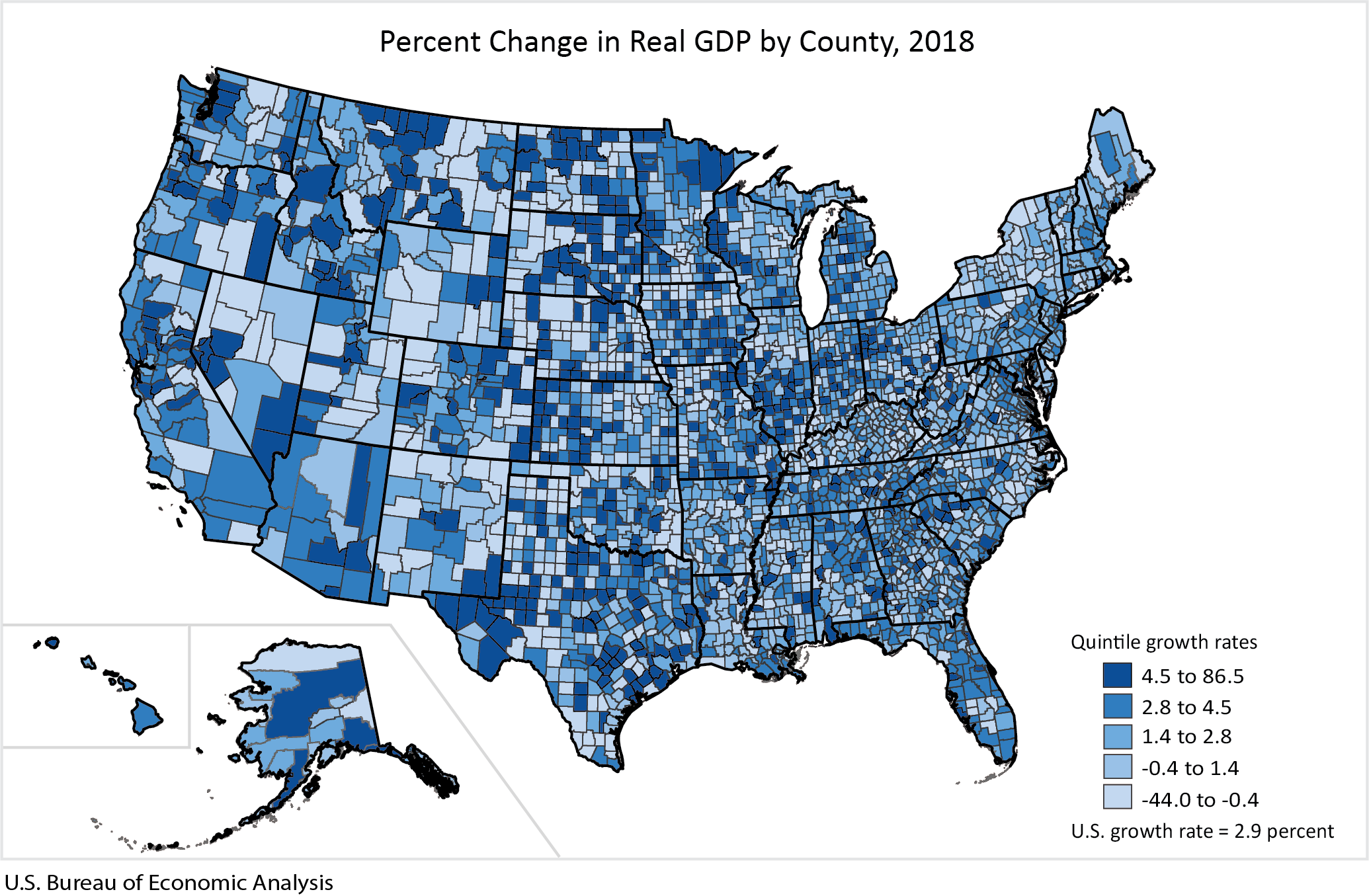Local Area Gross Domestic Product, 2018First Official Release of Gross Domestic Product by County, 2001-2018
Real gross domestic product (GDP) increased in 2,375 counties, decreased in 717, and was unchanged in 21 in 2018, according to estimates released today by the U.S. Bureau of Economic Analysis (BEA).
The percentage change in real GDP ranged from 86.5 percent in Jackson County, WV, to -44.0 percent in Grant County, ND.
In 2020, data for counties and metropolitan areas will be contained in a news release called Gross Domestic Product by County and Metropolitan Area.
The full text of the release on BEA's website can be found at: www.bea.gov/news/2019/
Highlights
Large Counties: 141 counties with populations greater than 500,000 in 2018
- Real GDP increased in 136 and decreased in 5.
- GDP ranged from $11.2 billion in Pasco County, FL, to $710.9 billion dollars in Los Angeles County, CA.
- Santa Clara County, CA, (10.2 percent) was the fastest growing large county. The information industry was the leading contributor to the county's growth.
- Kern County, CA, (-0.7 percent) had the largest percentage decrease in GDP. The mining, quarrying, and oil and gas extraction industry (primarily oil and gas extraction) was the leading contributor to the decrease.
Medium Counties: 464 counties with populations between 100,000 and 500,000 in 2018
- Real GDP increased in 433, decreased in 30, and was unchanged in 1.
- GDP ranged from $2.0 billion in Saline County, AR, to $52.6 billion dollars in Morris County, NJ.
- Canadian County, OK, (21.0 percent) was the fastest growing medium county. The mining, quarrying, and oil and gas extraction industry (primarily oil and gas extraction and support activities) was the leading contributor to the county's growth.
- San Juan County, NM, (-6.1 percent) had the largest percentage decrease in GDP. The mining, quarrying, and oil and gas extraction industry (primarily non-oil and gas mineral extraction) was the leading contributor to the decrease.
|



